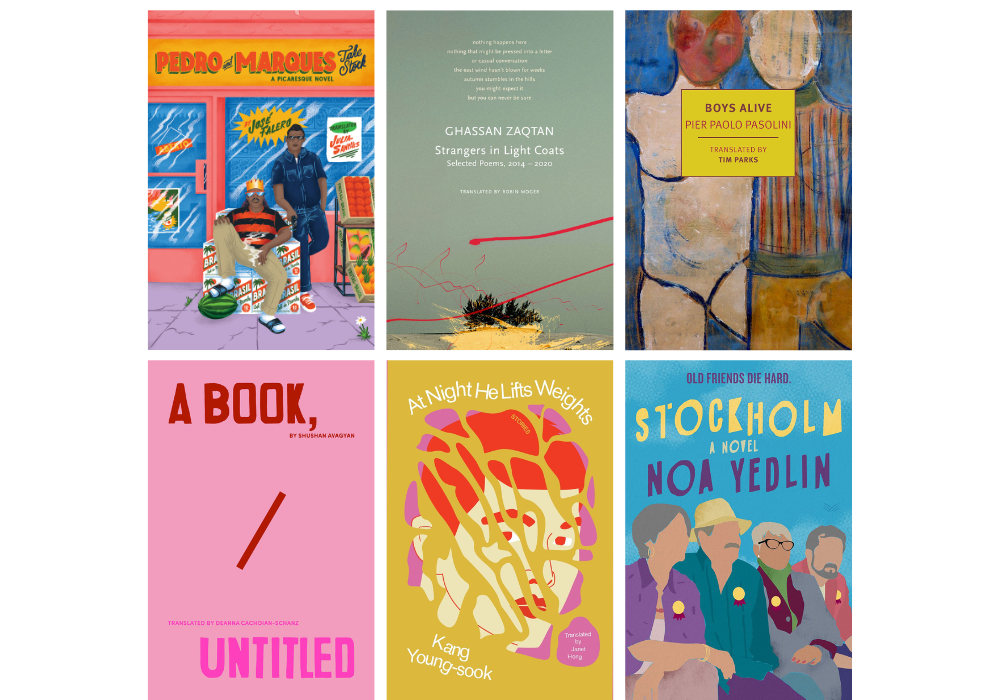In the past, I often felt lost buying books for the kids of friends and families. Goodnight, Moon may be inexhaustibly good, but everyone already has it; same with The Phantom Tollbooth; same with most all of the (sadly few) books I remember from my own childhood. But once I had my own kid, I started not only reading children’s books anew but wishing I could talk all my friends into reading them, too, so that somebody could speak with me about these stories that read like meteorites, full of information about other worlds. Here are some of my favorite kids’ books in translation from five different countries:
In picture books, I am wild for My Valley and Hīznobyūtī, both by the French cartoonist and illustrator Claude Ponti, put out by Elsewhere Editions, an imprint of Archipelago Books. Hīznobyūtī is a journey narrative of a creature nicknamed Hīznobyūtī who wanders far from home (with his ally Martin Clock) until he eventually returns to discover he might, despite what it seemed, be wanted back at the home in which he felt so unloved. In My Valley, narrator Poochie Blue never strays from home—his valley—and each oversized spread details another corner or practice of his home valley—a place to him familiar, to us fantastical. Ponti’s work is playful, gentle, and profound. These books are eccentrically sized, which makes them a wonder to hold. The translator, Alyson Waters, does a marvelous job with Ponti’s wordplay and poetics.
I also adore all four of the available tyrannosaurus stories by Tatsuya Miyanishi, published by Museyon Books and translated from the Japanese by Mariko Shii Gharbi. In each one—You Look Yummy, I Want That Love, I Will Love You Forever, and You Are My Best Friend—the monstrous T-Rex discovers he may not be as monstrous as he thinks, that he may have the capacity to love. These stories make me weep with an intensity usually ascribed to Greek tragedy or long distance commercials. My five-year-old loves all of them, and the mistaken identity plot lines are central and deep for her.
The Hole by Øyvind Torseter of Norway, translated by Kari Dickson and published by Enchanted Lion Books, has very few words, and a literal hole runs through the middle of its pages. I got this book when my daughter was just two, and we read it then and still read it now. A creature moving into a new apartment discovers a hole which keeps moving, which he can’t manage to understand or get rid of, but which he eventually accommodates as a moon, as a light. I assume every adult knows about these absences with which we have to make a measured peace.
A longtime favorite of mine for older kids is The Number Devil by Hans Magnus Enzensberger, illustrated by Rotraut Susanne Berner, translated by the great Michael Henry Heim (who also translated Thomas Mann, Bohumil Hrabal, and Milan Kundera), and published by Henry Holt and Co. It’s a dreamy adventure story that is somehow about prime numbers, Fibonacci sequences, and other concepts in math, all experienced by a kid who fears and is confused by math. Numbers are themselves a foreign language of sorts, and this book makes that foreign landscape reachable.
And also for older kids: I recently read and loved The Wild Book by Juan Villoro, a Mexican journalist and novelist. Published by Yonder, an imprint of Restless Books, the book is seamlessly translated by Lawrence Schimel, and it reads as compellingly as anything written for adults. In a summer at his strange uncle’s house, thirteen-year-old Juan discovers he is a “Princeps Reader”—a person who can bring out the magic in books, who can, in a sense, make them real. His unelected mission then becomes to track down the mysterious and unread Wild Book before a menacing Pirate Book can beat him to it. The novel is transfixing and emotional, and, for booklovers, it reads like the memoir of your imagined other self.
Read WWB’s interviews with publishers of children’s literature in translation










